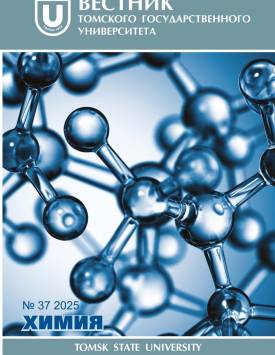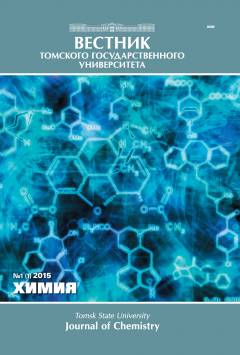Investigation of the process of decomposition of uranium oxide production products
To obtain uranium hexafluoride intended for isotopic enrichment at separation plants in Russia, uranium raw material from the refining plant in the form of a solution of uranyl nitrate UO2(NO3)2 undergoes several main processing stages: obtaining a precipitate of ammonium polyuranate, drying the precipitate and calcining it to uranium trioxide or triuranium octoxide, fluorination of oxides to uranium hexafluoride. Under production conditions, drying of wet ammonium polyuranate with the removal of hygroscopic and crystallization moisture and calcination with thermal decomposition of ammonium polyuranates to uranium oxides are carried out in horizontal drum devices - drying and calcining furnaces at different temperatures. The quality and technical and economic indicators of uranium hexafluoride production depend significantly on the technological parameters of these processes. The paper presents the results of studies of the processes occurring during thermal decomposition of ammonium polyuranates to uranium oxides. Thermal decomposition of the samples was carried out on an SDT Q600 thermal analyzer in the temperature range from 20 to 900 °C with a heating rate of 10 deg/min. The phase compositions of the initial and final samples were determined using X-ray structural analysis on an ARL X’TRA diffractometer. The initial ammonium polyuranate had a phase composition of (NH4)2U4O13∙7H2O, and the semi-products formed in drying ovens at temperatures up to 300 °C consisted mainly of compounds of the composition (NH4)2U4O13∙nH2O, where n = 1.6…2. It is shown that the decomposition process of ammonium polyuranate is complex and is accompanied by three endo- and two exothermic effects. The probabilistic mechanism of thermal decomposition of ammonium polyuranate is as follows: in the temperature range from 25 to 220 °C, hygroscopic and, partially, crystallization moisture are removed, in the range from 220 to 315 °C - ammonium nitrate decomposes, in the range from 315 to 385 °C, ammonium nitrogen and part of the crystallization moisture are removed, the temperature range from 385 to 465 °C is associated with the formation of a hydrated form of uranium trioxide UO3, at a temperature above 465 °C, residual crystallization moisture is removed from uranium trioxide with the subsequent formation of triuranium octaoxide U3O8. The article also presents the results of studies of the thermal decomposition of semifinished products from drying ovens at a temperature in the layer of (250 ± 50) °C, therefore, they do not contain hygroscopic and, partially, crystallization moisture. The subsequent stages of thermal decomposition of the semi-finished products from the drying ovens, as well as ammonium polyuranate, in the temperature range from 315 to 630ºC, are identical. Contribution of the authors: the authors contributed equally to this article. The authors declare no conflicts of interests.
Keywords
ammonium polyuranate, triuranium octoxide, uranium trioxide, differential thermal analysis, thermal decomposition, activation energyAuthors
| Name | Organization | |
| Sofronov Vladimir L. | Seversk Technological Institute – branch of the National Research Nuclear University MEPhI | vlsofronov@mephi.ru |
| Pimenov Stepan G. | JSC Siberian Chemical Plant | Stepan.pimenov.2013@mail.ru |
| Zinovieva Anna V. | JSC Siberian Chemical Plant | AVPolyanskaya@mail.ru |
References

Investigation of the process of decomposition of uranium oxide production products | Vestnik Tomskogo gosudarstvennogo universiteta. Chimia – Tomsk State University Journal of Chemistry. 2025. № 37. DOI: 10.17223/24135542/37/10
